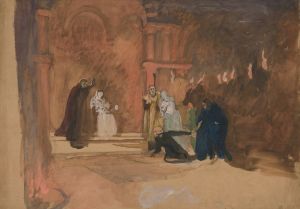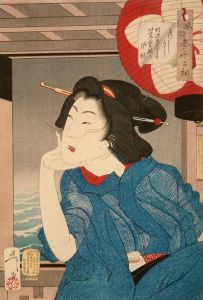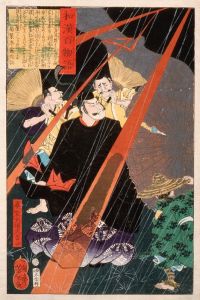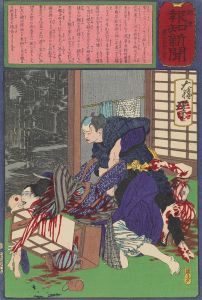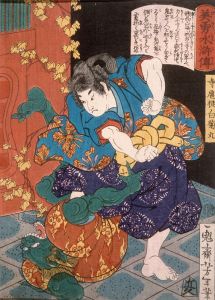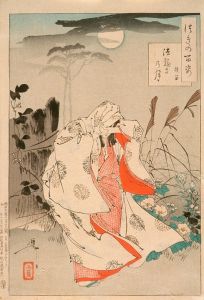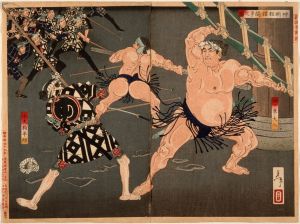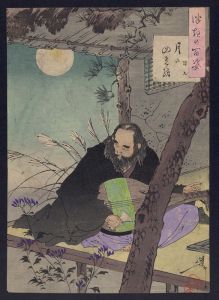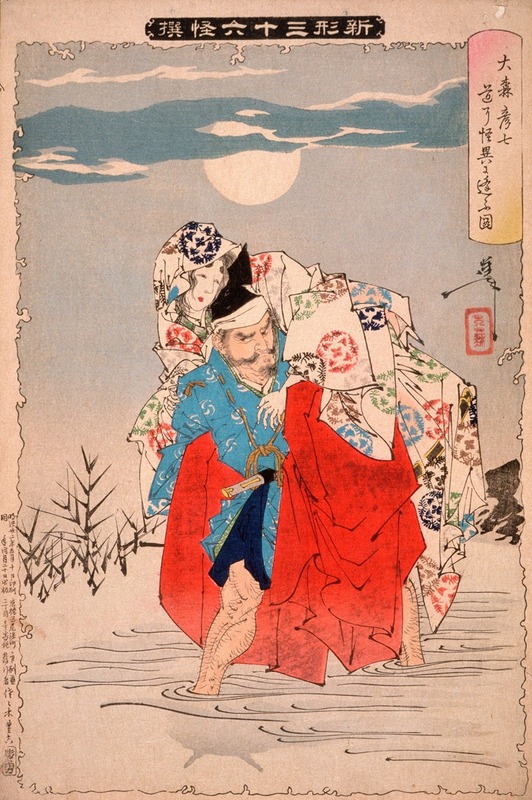
Ōmori Hikoshichi Meets a Demon on the Road
A hand-painted replica of Tsukioka Yoshitoshi’s masterpiece Ōmori Hikoshichi Meets a Demon on the Road, meticulously crafted by professional artists to capture the true essence of the original. Each piece is created with museum-quality canvas and rare mineral pigments, carefully painted by experienced artists with delicate brushstrokes and rich, layered colors to perfectly recreate the texture of the original artwork. Unlike machine-printed reproductions, this hand-painted version brings the painting to life, infused with the artist’s emotions and skill in every stroke. Whether for personal collection or home decoration, it instantly elevates the artistic atmosphere of any space.
Ōmori Hikoshichi Meets a Demon on the Road is a woodblock print created by the renowned Japanese artist Tsukioka Yoshitoshi. Yoshitoshi, who lived from 1839 to 1892, is celebrated as one of the last great masters of the ukiyo-e genre of woodblock printing and painting. His works are known for their dynamic composition, vivid colors, and dramatic storytelling, often drawing from historical events, folklore, and legends.
This particular print is part of Yoshitoshi's series "New Forms of Thirty-Six Ghosts" (Shinkei Sanjūrokkaisen), which was published between 1889 and 1892. The series is notable for its exploration of supernatural themes, showcasing ghosts, demons, and otherworldly beings from Japanese mythology and folklore. Yoshitoshi's work in this series is characterized by a blend of traditional ukiyo-e techniques and innovative approaches that reflect the changing artistic landscape of the Meiji era.
Ōmori Hikoshichi Meets a Demon on the Road depicts a scene from a well-known Japanese legend involving the samurai Ōmori Hikoshichi. According to the tale, Hikoshichi was traveling along a road when he encountered a beautiful woman who requested his assistance in crossing a river. As the story unfolds, the woman reveals her true form as a demon. The print captures the moment of transformation, with Yoshitoshi skillfully illustrating the tension and surprise of the encounter.
Yoshitoshi's depiction of this scene is marked by his attention to detail and his ability to convey emotion and movement. The composition of the print draws the viewer's eye to the central figures, with Hikoshichi's expression of shock and the demon's menacing transformation vividly portrayed. The use of color and line work enhances the dramatic impact of the scene, a hallmark of Yoshitoshi's style.
The print not only reflects Yoshitoshi's artistic prowess but also serves as a cultural artifact that offers insight into the folklore and storytelling traditions of Japan. The legend of Ōmori Hikoshichi and the demon is one of many stories that have been passed down through generations, illustrating themes of bravery, deception, and the supernatural.
Yoshitoshi's work, including this print, is highly regarded for its contribution to the ukiyo-e tradition during a time of significant cultural and social change in Japan. As Western influences began to permeate Japanese society during the Meiji period, artists like Yoshitoshi played a crucial role in preserving traditional Japanese art forms while also adapting to new artistic trends.
Today, Ōmori Hikoshichi Meets a Demon on the Road is appreciated not only for its artistic merit but also for its role in the broader context of Japanese art history. It exemplifies Yoshitoshi's mastery of the woodblock print medium and his ability to capture the essence of Japanese folklore, making it a valuable piece for both art enthusiasts and scholars of Japanese culture.





